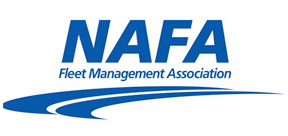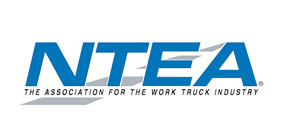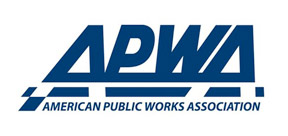Idaho overpass significantly decreases wildlife-vehicle collisions

Mounting numbers of vehicle-wildlife collisions caused the Idaho Transportation Department to step in and make the Cervidae Peak Wildlife Overpass along Idaho State Highway 21, part of the Ponderosa Pine Scenic Byway, a safety planning priority.
Located about 10 miles east of Boise, the stretch of highway typically sees an average of 14,000 cars daily. It runs across the biannual migration routes of 8,000-9,000 mule deer and 1,800-2,400 elk from Boise River herds. When the animals migrate during the spring and fall, SH-21 becomes fraught with collision danger.
“In 2014, an 11-mile segment of SH-21 was identified through a statewide safety analysis as a highway with a high propensity of wildlife-vehicle collisions and incidents,” Sophia Miraglio, Idaho Transportation Department public information officer, explained. “In peak years, particularly during harsh winters, state forces such as the Idaho Transportation Department and Idaho Fish and Game would report upwards of 20 collisions in this stretch of highway and remove an average of 50 to over 100 big game animals annually.”
In 2022 alone, Miraglio said, over 1,500 wildlife collisions occurred statewide, leading to an estimated $40 million in damage and numerous injuries and fatalities. With safety concerns mounting for both drivers and wildlife, the ITD prioritized creating a wildlife overpass near Cervidae Peak to reduce the number of accidents and maintain the critical migration route.
The project took decades and a great deal of cooperation and persistence to become a reality. In the mid-2000s, the ITD began networking with various organizations and collecting information regarding wildlife-vehicle collisions. Fencing and overpass construction began in May 2023 and were completed in November 2023.
In mere weeks, physical evidence and trail camera footage showed the animals had begun using the overpass. Monitoring of the overpass will track its effectiveness long-term.

Because the project was the ITD’s first wildlife overpass project, the planning, development and launch phases required a great deal of collaboration with other organizations. Input came in from local land use agencies such as Boise and Ada counties and the city of Boise, as well as federal land management and resource agencies and a variety of wildlife and conservation organizations.
Examples and best practices from other states and countries were taken into account. Some of the most instrumental agencies working with Idaho Transportation Department and bringing their own expertise to the project were the U.S. Forest Service, Idaho Fish and Game, U.S. Fish and Wildlife Service, Army Corps of Engineers and the Bureau of Land Management.
“The process began with identifying Cervidae Peak, located at mile 19.35 on SH-21, as the ideal crossing site,” Miraglio described. “It was selected due to its alignment with existing wildlife migration corridors, extent of public lands to facilitate landscape connectivity in perpetuity and natural topography that helped reduce construction costs. These agencies and organizations contributed their expertise in transportation, engineering, wildlife behavior, ecological and habitat conservation and land use planning to ensure a successful project.”
The cost for the Cervidae Peak Wildlife Overpass was approximately $7.5 million. Funding came primarily from a Federal Lands Access Program grant through the Western Federal Lands Highway Division of the Federal Highways Administration. Matching fund requirements came from an assortment of local, state and federal partners.
The ITD and Idaho Fish and Game were also able to utilize wildlife restoration funds, which are designed to support wildlife conservation, habitat restoration and education programs. Wildlife and conservation organizations and private entities were also significant contributors.
The project combined efforts and funds from local, state and federal agencies, and working together was sometimes challenging.
“Aligning federal, state and local missions, which often contrast and differ in regulatory objectives, goals and metrics, required considerable cooperation, persistence and understanding that had to be overcome by all involved,” Miraglio stated.
When it came to construction, one of the challenges was to disrupt the busy traffic flow of SH-21 as little as possible. The natural terrain of the area made it possible for a two-lane bypass so that traffic could continue in both north and southbound directions during construction with only minimal delays.
When planning the construction, geo-technical investigation, sound engineering, traffic needs to geometric constraints comparison, adaptive design, an understanding of animal behavior, the animals’ need for habitat and migration, and connection between the animals’ home ranges all had to be taken into account.

The project then integrated the natural landscape into the overpass design and structure, as well as fencing and mitigating treatments, to encourage the animals to use the overpass. In addition, the location chosen promised to minimize the possibility of animals attempting to cross a reservoir and drowning – a potential problem particularly in the winter, since the migration path follows the Lucky Peak Reservoir and Mores Creek.
As Idaho’s first dedicated wildlife overpass, the Cervidae Peak Wildlife Overpass is a pioneer. Approximately 150 feet wide, it allows large herds to pass safely at once.
“It’s part of a larger wildlife corridor design, which includes strategic fencing to prevent animals from entering the highway and guide them to the overpass,” Miraglio said. “The existing terrain, topography and native vegetation and design of the overpass – to bridge the ridgeline – and the existing natural migration corridor helped facilitate adaptation by the animals and make the new crossing feel natural to use.
“What sets it apart is the integration of wildlife science; roadway safety engineering; and land use planning in the face of understanding migrating big game herds, particularly mule deer and elk, which must move through their home ranges traversing major highways, private and public lands and past major developments and neighborhoods, through lakes and rivers and over, under or around concrete barriers and a myriad of fences.”
Trail cameras are used to view the animals’ use of the overpass and demonstrate how they have already adapted.
The results of the wildlife overpass were immediate. In the year following installation of the fencing and overpass, there were no wildlife-vehicle collisions reported on that stretch of SH-21.
“This is a major success, especially given that the project aimed to reduce wildlife-vehicle collisions by at least 80%,” Miraglio shared.
As more animals become familiar with the overpass structure and observe other animals and herd leaders using the overpass, it is believed usage will increase. Feedback from the community and drivers has also been positive: The overpass has successfully increased driver safety and wildlife conservation while maintaining the natural beauty of the byway.
Next Article: Decades-long revitalization breathes new life into old mill city



